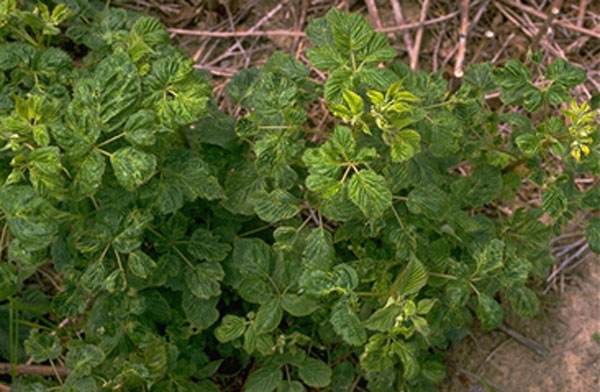Leaf curling can be caused by many factors:
Aphids transmit several viruses to raspberries. The main vector of raspberry mosaic complex in North America is the large raspberry aphid (Amphorophora agathonica).
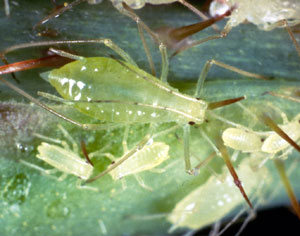
Raspberry leaf curl virus is transmitted by the small raspberry aphid (Aphis rubicola).
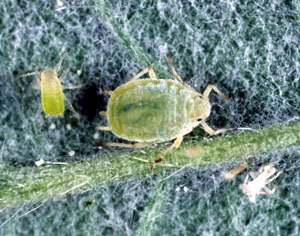
Aphids may also cause the petioles of leaves to twist and curl when they feed on them. More raspberry aphid information.
Blackberry psyllid, (Trioza tripunctata), causes severe curling on both thornless and thorny blackberries. Psyllid damage is often mistaken for a plant disease since the curling continues for some time after the insects are gone.
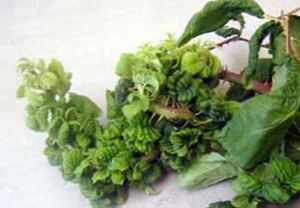
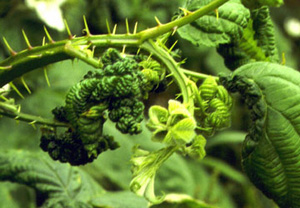
Psyllid damage is only a problem when blackberries are grown in close proximity to conifers, which serve as an overwintering site for adults. More blackberry psyllid information
Leafhoppers cause the upper leaves of primocanes to curl up, develop a yellowish cast, and reduce their growth.

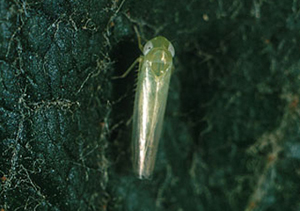

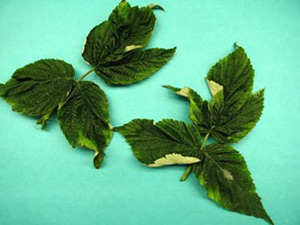
More raspberry potato leafhopper information
Leafrollers affect raspberries as well as strawberries and blueberries.
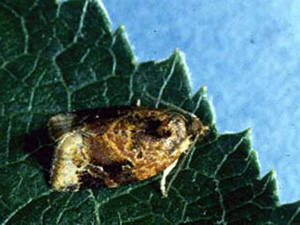
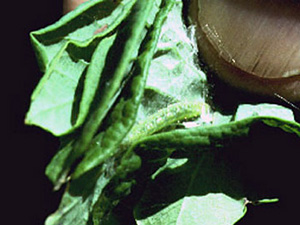
More raspberry leafroller information
Herbicide drift from some materials will cause leaves to curl, such as 2,4-D …

… Solicam…

… Banvel …
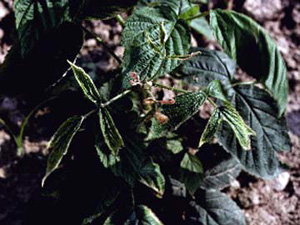
… and Roundup.
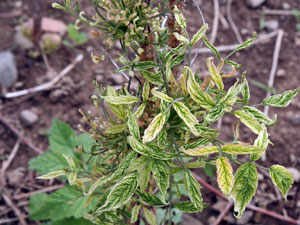
Viruses – Raspberry Mosaic Virus and Leaf Curl Virus are common causes of leaf crinkling. Usually crinkling is accompanied with yellowing.
